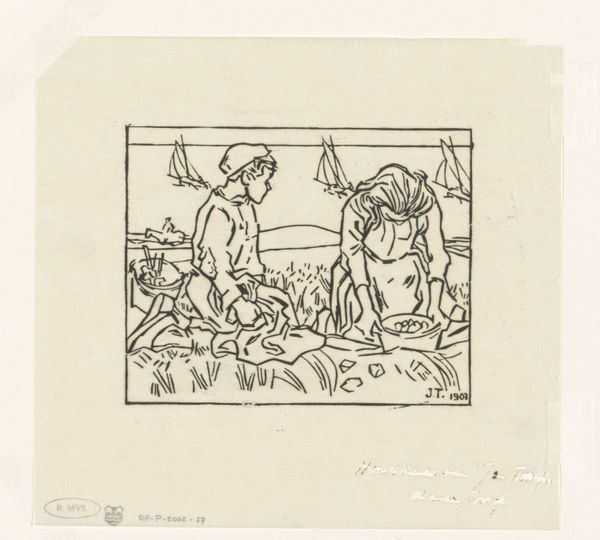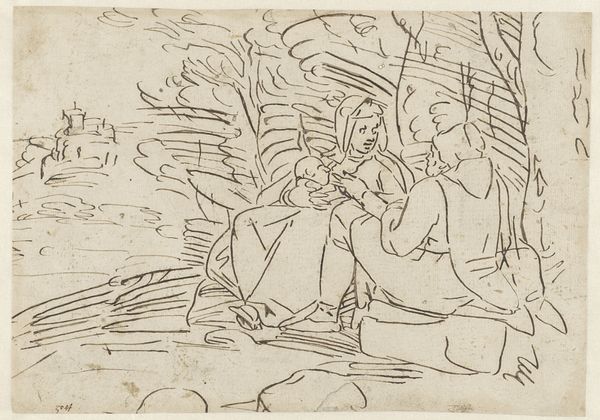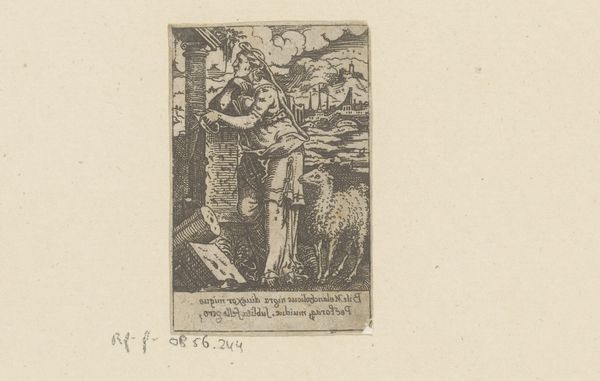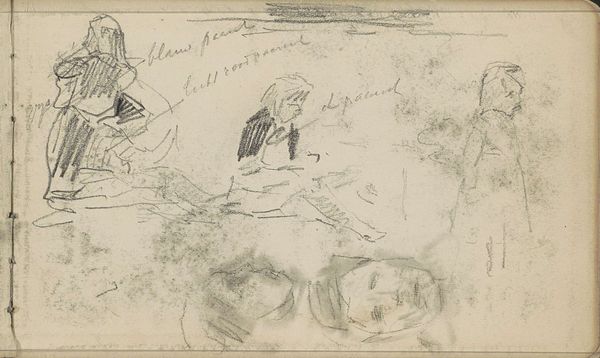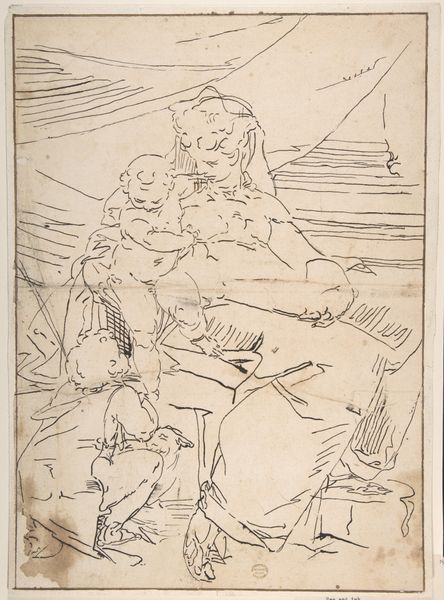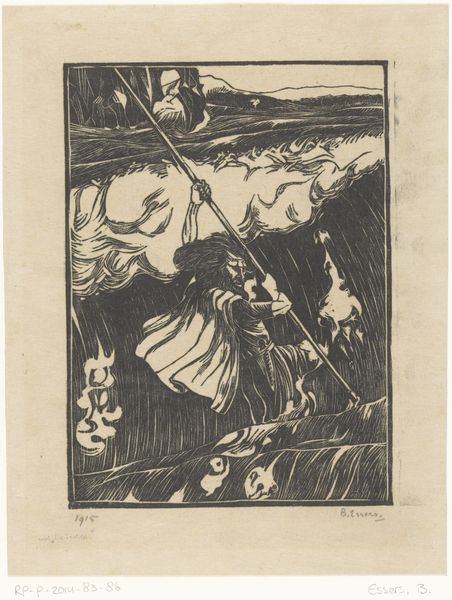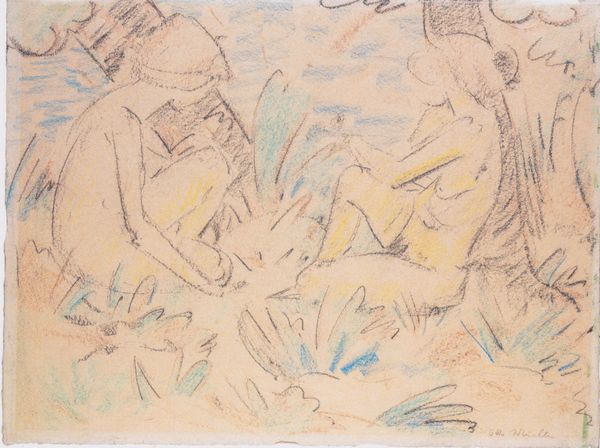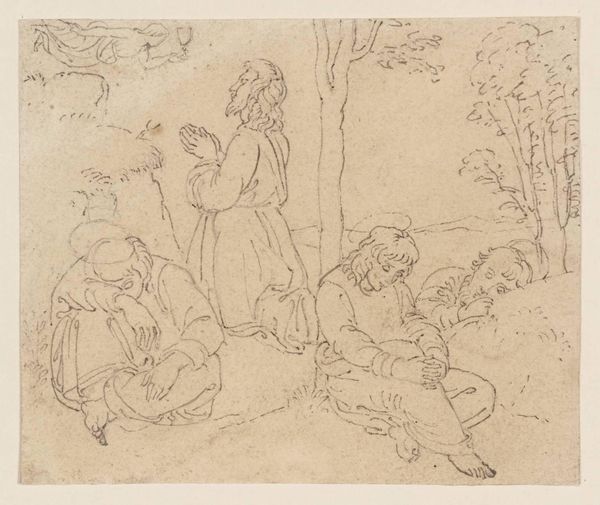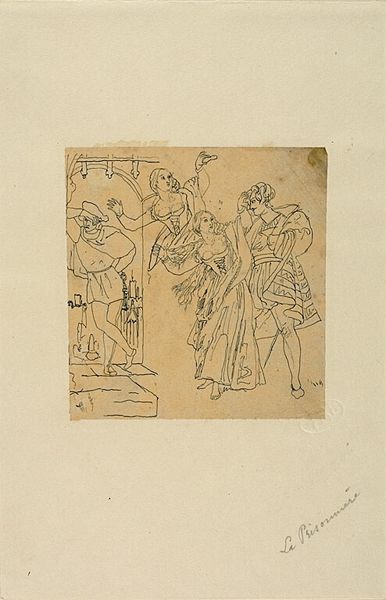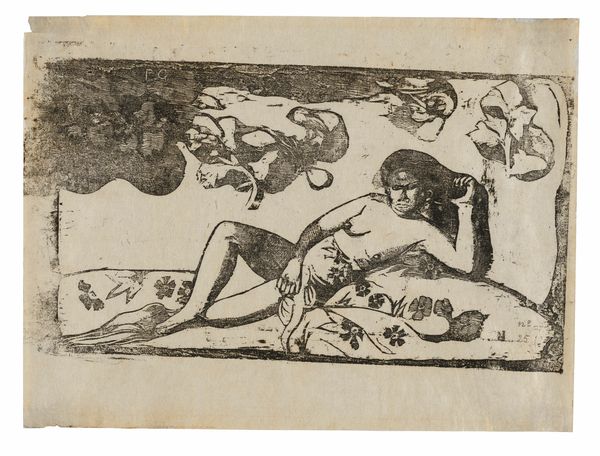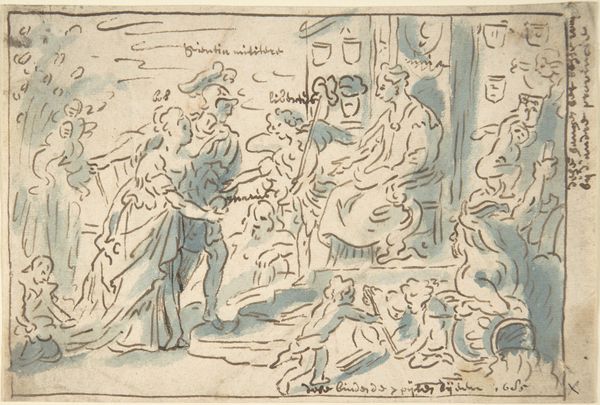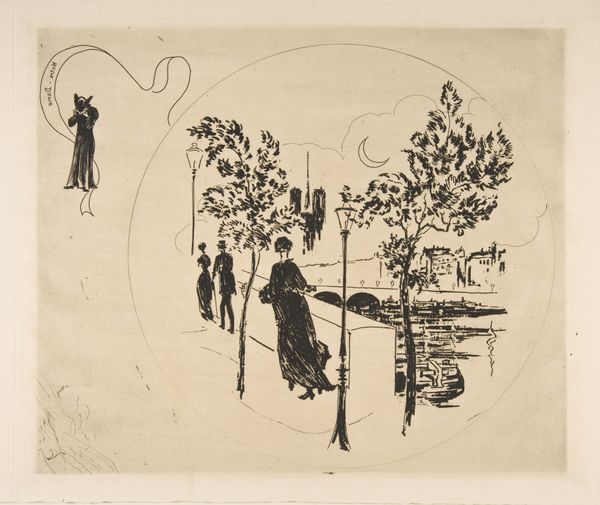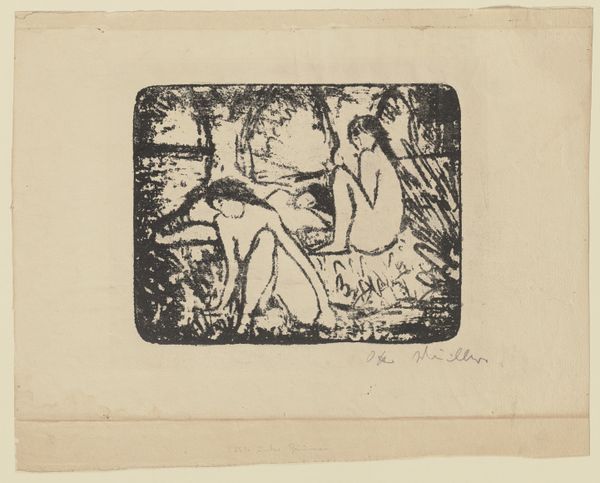
Dimensions: height 137 mm, width 189 mm
Copyright: Rijks Museum: Open Domain
Curator: Jan Toorop's "Boy and Girl on the Beach," made in 1904, using pen and ink. It's strikingly simple, almost elemental in its composition. It makes me think of children and how they were represented through different periods in history. What strikes you? Editor: I'm drawn to how somber it feels, despite depicting children. There’s a weightiness in the lines, a lack of carefree joy you might expect. What do you see in this piece, beyond just the literal image? Curator: Absolutely. Think about the social context of the early 20th century. Childhood wasn't always viewed as this idyllic, protected period. Working-class children, in particular, faced immense hardship. Do you notice how Toorop refrains from idealizing the children's features? Their clothing is simple, and there is very little to indicate what, exactly, is their status in life. What does that imply about the way class is portrayed? Editor: That's a good point, they look kind of melancholic! And by focusing on the universal aspects of childhood, perhaps Toorop is subtly commenting on the inequalities of the time, highlighting a shared experience regardless of class? It makes me wonder about the social activism of the artist. Curator: Precisely! Toorop, influenced by Symbolism, often explored deeper emotional and social realities. This piece might subtly critique the romanticized views of childhood prevalent in more affluent circles, exposing a different, less celebrated reality. He is a protest painter, as well. Consider the muted tones too; how do they influence our perception of innocence and vulnerability? Editor: I see what you mean. The muted colors, along with the rather crude rendering, challenge the period's sentimental portraits. It offers an authentic glimpse, even if tinged with a kind of resigned sadness. Curator: Exactly! By situating this seemingly simple image within its social and historical context, we begin to understand its profound implications, transforming it from a mere scene into a commentary on childhood, class, and societal expectations. Editor: I now appreciate how even a seemingly simple sketch can unpack complex social themes when considered through an activist lens. Curator: Agreed. It underscores art’s powerful role in reflecting, questioning, and hopefully, reshaping our understanding of the world.
Comments
No comments
Be the first to comment and join the conversation on the ultimate creative platform.
